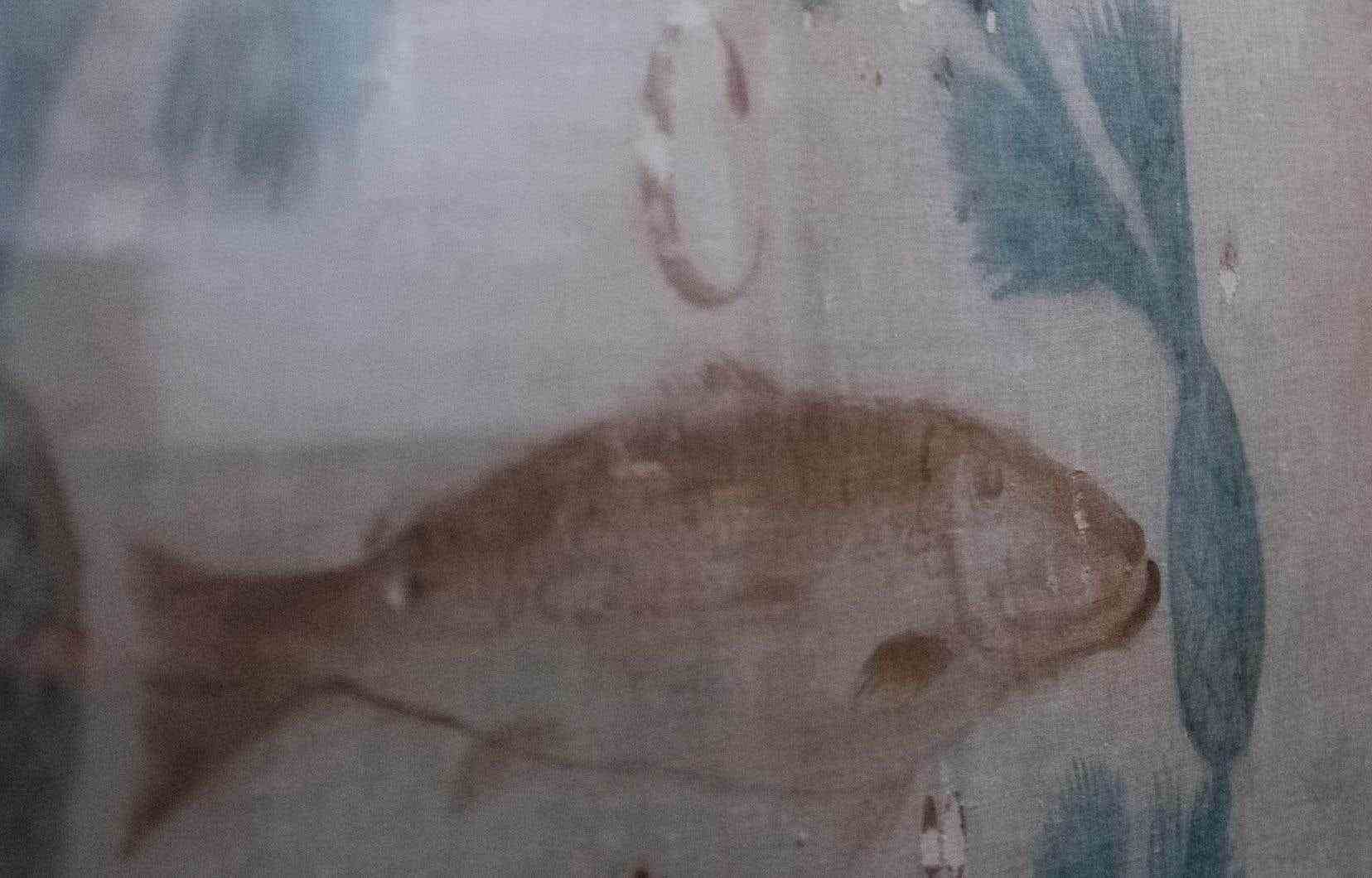The patriot flag kept at the Château Ramezay, in Montreal, would never have flown on the battlefield of Saint-Eustache in 1837 as affirmed by generations of historians, concludes the researcher André Sarrazin after having scrutinized the smallest folds of the banner.
“I photographed it every four inches,” exclaims the retiree from the health network, whose interest in patriots dates back to his reading of the novel. No-Name-Family of Jules Verne, in his early twenties.
The symbol-laden flag is 1.6 meters wide by 1 meter high. It features a muskellunge on a white background, in the center of a wreath of pinecones placed above a branch dotted with maple leaves. Everything is accompanied by the letters “C” and “J-Bte”, which traditional historiography associates with “Canada” and “Jean-Baptiste”, the patron saint of French Canadians.
Emerged unscathed from the patriot uprising of 1837, the standard will be scarred by his heirs at the end of the 19th century.e century. One of them will first clumsily burn his letters with varnish, wanting to restore their luster. This one would have moreover reversed his bottle on the edge of the flag where one could formerly see a beaver. “It’s like a splash,” explains André Sarrazin. That’s why we cut out the top band at the time, it would have looked crazy otherwise. »
In 1892, the remains of this historic relic were nailed to a wooden frame to be exhibited at the Crystal Palace in Montreal. The fabric will slowly disintegrate on this support covered with an airtight glass, until its restoration by the Canadian Institute of Conservation (CCI) in 1985. “The flag was so dry that it was like a potato chip”, emphasizes Mr. Sarrazin. The original lining of the banner is then discarded, much to the chagrin of the researcher.
Spring 1837
The so-called Saint-Eustache flag consists of three strips of cotton. It was sewn in the spring of 1837 by Marie-Victoire Félix and Louise Choquette before being painted by notary Jean-Joseph Girouard, from the village of Saint-Benoît. This self-taught artist naturally chose to represent the beaver and the maple leaf associated with Lower Canada, the ancestor of Quebec.
The presence of a muskellunge is more surprising. For some, it would be a religious symbol, a hypothesis rejected by André Sarrazin, for whom this fish simply evokes the Chêne River flowing between Mirabel and Saint-Eustache. “For the people of that region, the muskellunge is a fighting animal! he says.
1er June 1837, the banner freshly painted by Girouard is unfurled at the assembly of Deux-Montagnes, where the patriots demonstrate in favor of the boycott of British products. “All the houses of St. Benedict were decorated with magnificent flags and banners,” the newspaper read. The Minerva.
The muskie standard precedes leader Louis-Joseph Papineau’s horse-drawn carriage, alongside another flag on which is painted an eagle holding a maple leaf in its beak. “Our patriots no doubt wanted to say that America would devour Canada,” quipped a loyalist who attended the parade. Certainly, their prediction will be only too verified, if they dare to separate from England. »
Papineau’s carriage is followed by a more gloomy banner where you can see a skull and crossbones surrounded by inscriptions summarizing the program of the Patriote Party: “Elective institutions”, “Encouragement of education”, “Bill du jury », « Money Bill »! The other flags of the convoy display a string of slogans ranging from “Death rather than slavery” to “Honour to the patriotic Canadian ladies”, passing by “Flee tyrants, because the people wake up!” “.
The uprising
In October 1837, the fabric muskellunge resurfaced at the Six-County Assembly, which brought together nearly 6,000 demonstrators in Saint-Charles-sur-Richelieu. Notary Girouard’s flag is waved there by none other than Jean-Olivier Chénier, the future “martyr” of Saint-Eustache. “He kept it for about two weeks, then he gave it to the patriot Damien Masson as a standard bearer to recruit volunteers to fight the British troops,” explains André Sarrazin.
The uprising broke out in November 1837. After putting down the rebels in the Richelieu Valley, General Colborne’s British regiments entered Saint-Eustache on the morning of December 14, 1837. The muskie flag would then be in Saint-Benoît, at a fifteen kilometers to the northwest. “Masson never went to the gates of Saint-Eustache, notes Sarrazin. He arrived around 4 p.m., when the battle was already over. »
Passed from hand to hand, the standard was acquired in 1908 by Château Ramezay. The curious who see it for the first time therefore interpret each perforation of the fabric as so many marks left by the British bullets. The largest hole is also associated with the passage of a cannonball. However, for a projectile of this weight to pierce the flag, the latter would have had to be held firmly under tension by two men, indicates the ICC report.
If he did not see the fire of the fight, the standard of the notary Girouard nevertheless testifies to the patriotic effervescence of the summer of 1837. He would also be the only survivor of this eventful period since the disappearance of the tricolor of Montebello after it was deposited at Library and Archives Canada in 1975. “It was stolen with the chest that contained it,” explains André Sarrazin, recalling that the green, white and red flag that we see today in the Papineau funeral chapel is a polyester copy. “Efforts to find the original in the archives and other federal museums have not borne fruit,” confirms Natalie Bull, of the trust that owns the Montebello chapel.
“As bizarre as it may be, the only patriotic flag we have left is that of Château Ramezay,” says André Sarrazin. That’s why it’s so important! »
